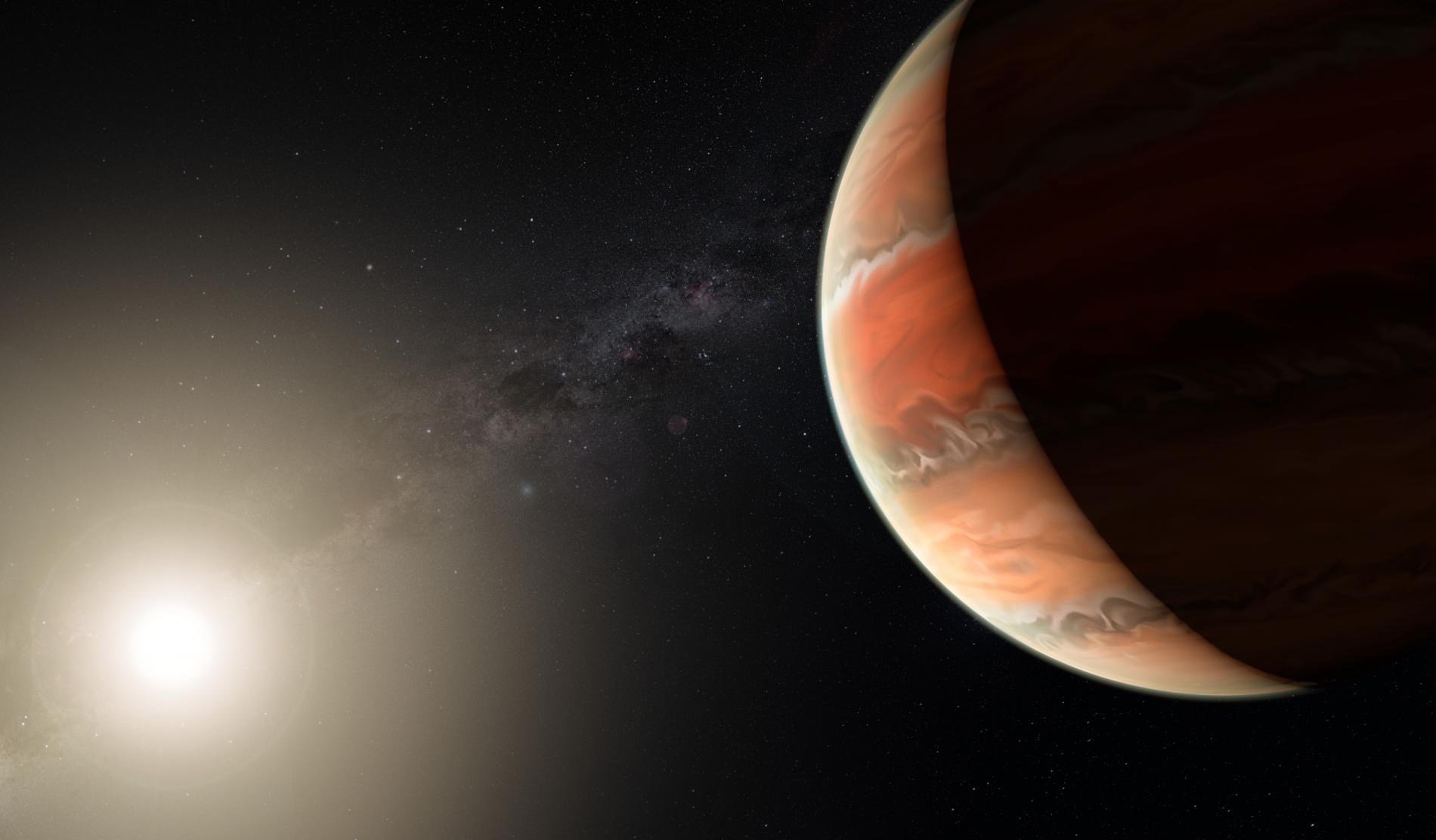The unprecedented view of an exoplanet´s atmosphere
Using the FORS2 instrument on ESO’s Very Large Telescope, astronomers have detected for the first time the presence of a metal oxide in the atmosphere of an exoplanet. This discovery opens the doors for detailed study of chemistry in exoplanetary atmospheres
The search for planets outside our Solar System is, nowadays, one of the most active areas of astrophysics. With more than 3,500 confirmed extrasolar planets, which show the infinite variety of possible worlds, efforts are now directed towards the characterization of these planets. A study, published today in the journal Nature, has detected for the first time heavy elements in the atmosphere of an exoplanet, which opens the door to the detailed study of atmospheric chemistry in extrasolar planets.
"It has been an arduous and careful work of about two years with large and high precision telescopes, accompanied by an intense effort in theoretical calculations," says Antonio Claret, a researcher at the Institute of Astrophysics of Andalusia (IAA-CSIC) in the study.

The target, the WASP-19b exoplanet, is cataloged as a "hot jupiter", a type of massive planet that, unlike the gaseous giants of our Solar System, is very close to its star. WASP-19b is especially exotic because it has a mass somewhat larger than that of Jupiter but is 40% larger - which places it almost in the range of low-mass stars - and is the giant planet with the shortest known orbital period: it revolves around its star in barely nineteen hours and it is estimated that the temperature of its atmosphere reaches one thousand seven hundred degrees Celsius.
"It is a very interesting planet because it is very close to the Roche boundary, which is the minimum distance to which it can approach its parent star without being destroyed by tidal forces," adds Antonio Claret (IAA-CSIC) In fact, we have already begun to study this system from the theoretical point of view, to verify how the tides evolve in such extreme conditions.
When WASP-19b traverses the disc of its host star, its light passes through the atmosphere of the planet and undergoes minor modifications. A careful analysis of this light allows to isolate the trace of the chemical elements that compose the atmosphere of the planet, and thus it has been possible to find small amounts of titanium oxide, water and sodium, as well as a kind of fog that covers the planet.
Titanium oxide is rarely seen on Earth. It is known to exist in the atmospheres of cool stars. In the atmospheres of hot planets like WASP-19b, it acts as a heat absorber. If present in large enough quantities, these molecules prevent heat from entering or escaping through the atmosphere, leading to a thermal inversion — the temperature is higher in the upper atmosphere and lower further down, the opposite of the normal situation. Ozone plays a similar role in Earth’s atmosphere, where it causes inversion in the stratosphere.
The presence of titanium oxide in the atmosphere of WASP-19b can have substantial effects on the structure and circulation of atmospheric temperature, and its finding opens the door to very detailed studies of the exoplanetary atmospheres. In addition, with a view to the future, this study will improve the theoretical models that will be used in the analysis of atmospheres of potentially habitable planets.
E. Sedaghati et al. "Detection of titanium oxide in the atmosphere of a hot Jupiter". Nature, DOI: 10.1038/nature23651
Instituto de Astrofísica de Andalucía (IAA-CSIC)
Unidad de Divulgación y Comunicación
Silbia López de Lacalle - sll[arroba]iaa.es - 958230676
Manuel González García manuelg[arroba]iaa.es - 958230566
http://www.iaa.es
http://www-divulgacion.iaa.es

